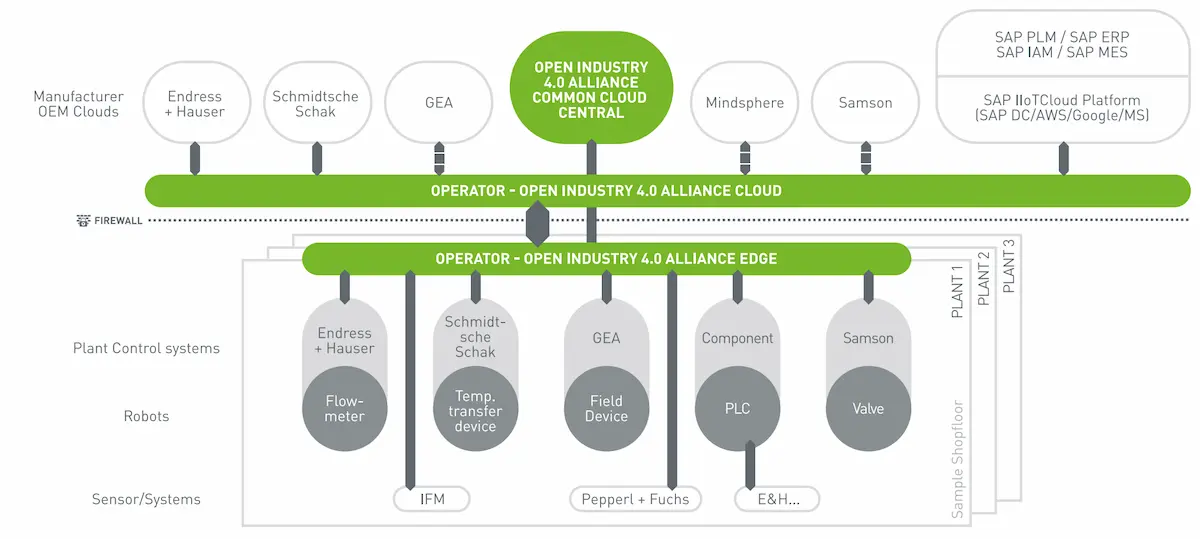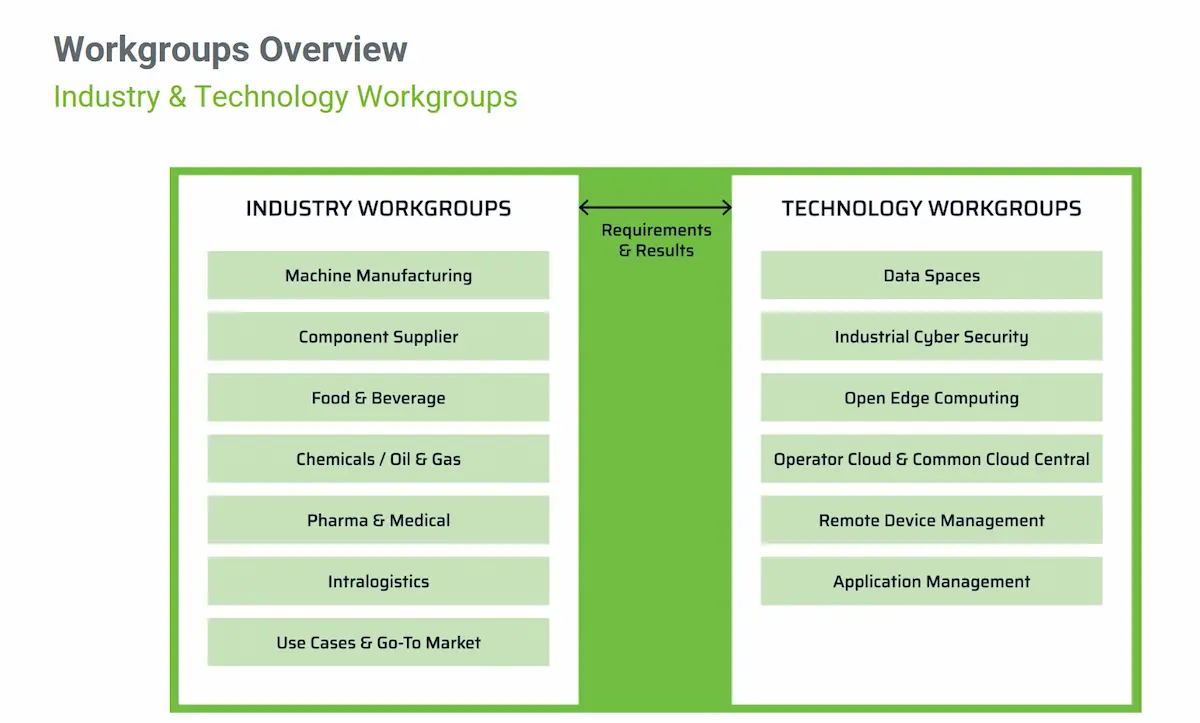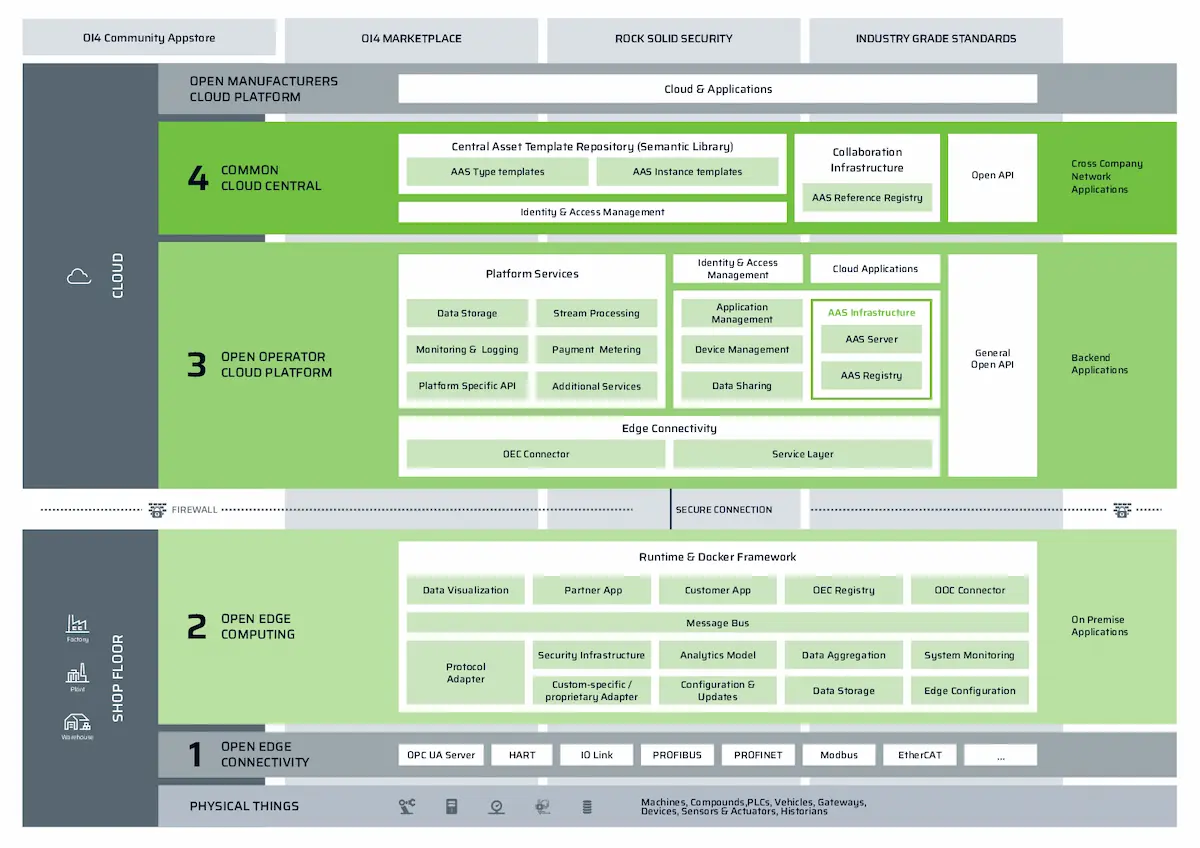Open Industry 4.0 Alliance & Prosys OPC
Industry 4.0 is a worldwide recognized term that is used to define practices for smart manufacturing. Open Industry 4.0 Alliance aims to unite vendors to support a common communication architecture. Prosys OPC products will help you to become Open Industry 4.0 compatible within your own systems with little effort.
The Reference Architecture Model for Industry 4.0 (RAMI 4.0) serves as a common guideline that helps building industrial systems based on international standards. The aim is to help automation experts at manufacturing sites to understand how to design their production processes for the needs of future requirements. The key is to use standard solutions to help connecting sensors, devices, machines and systems from different vendors together in a controlled way.
Industry 4.0 is mainly developed in Germany as part of the government-driven Plattform Industrie 4.0 program. Other German organisations such as ZVEI, NAMUR, DIN and VDMA have worked on the technology specifications for industry needs and standardised them to their own and worldwide ISO and IEC standards. Standards, however, won’t help users before there are products built to match them.
In 2019, KUKA, SAP, Beckhoff, Endress+Hauser, Hilscher, ifm, and Multivac founded a new open collaboration called Open Industry 4.0 Alliance that aims to answer the needs of the users. In three years time, the number of members has grown to almost one hundred, and Prosys OPC has been an active member since 2020. The aim is to help machine and system vendors to build shared conventions using the best technology and common standards.
As illustrated in Figure 1, the starting point has been the harmonization of machines and cloud services between different vendors. The harmonization aims to allow the use of shared communication channels instead of installing and configuring every system individually. Otherwise, a plant or a factory with tens or even hundreds of vendors becomes a nightmare for the maintenance staff.

The Alliance is not developing new technology. Instead, it creates guidelines and best practices for the technology in use. The Alliance has, however, created its own reference architecture that offers a harmonized model to the above-mentioned communication problem. As the name suggests, the Alliance works openly so that even non-Alliance members can access the documents that are created.
Industry branches and use cases
The Alliance is divided into branches according to field and technology workgroups, as illustrated in Figure 2. Special attention has been given to the chemical, pharma and food industry, as well as machine and component production and intralogistics. Most important use cases identified by industry-specific workgroups have received more specific solution recommendations. These include, for example, the master asset model (MAM), condition monitoring (CM, device health) and overall equipment effectiveness (OEE) calculations.

Technology workgroups, in turn, have created recommendations for practices that allow compatibility between vendors when developing solutions. Technology solutions have been gathered under the shared reference architecture. In it, you can see the following layers: physical machine level, plant/factory edge computing and cloud applications. Illustrated in Figure 3, the communication between these levels can be defined into sub-categories: Open Edge Connectivity, Open Edge Computing, Open Operator Cloud Platform and Common Cloud Central.

Edge computing environment
The Guideline for Open Edge Computing (OEC) defines requirements for machines and applications. OEC recommends that application components from different vendors should be run in Docker containers. This is becoming a common practice in industries, but OEC aims to solve the controlled maintenance of such multivendor systems using standard practices and interfaces.
Communication between applications in the OEC recommendation is based on the OPC UA PubSub over MQTT protocol. The recommendation is also using data structures defined in OPC UA. It is good to see that the new OPC UA PubSub communication can be fitted into Open Industry 4.0 solutions and that it has been chosen as a recommended standard. This work is hopefully also leading to new beneficial improvements in OPC UA PubSub.
Please, take a look at the OPC UA and Open Industry 4.0 article for more details on how OEC uses OPC UA in practice.
Prosys OPC, OPC UA and Open Industry 4.0
Prosys OPC has been actively taking part in the Open Industry 4.0 working groups, and we are happy to share our experiences with you, if you wish to know more about the Alliance and how it works.
We are currently adding support to the OI4 OEC communication as a part of our products, which in turn makes it possible to develop Open Industry 4.0 compatible machines and applications. In this way, we hope to help the industry to take advantage of these new technologies as reliably and easily as possible.
More Information
You can find more information from the Downloads of Open Industry 4.0. Additionally, we are also happy to help you with any questions and needs you or your organization might face. Don’t hesitate to contact us by email at sales@prosysopc.com or through our website contact form.
Author Info

Jouni Aro
Chief Technology Officer
Email: jouni.aro@prosysopc.com
